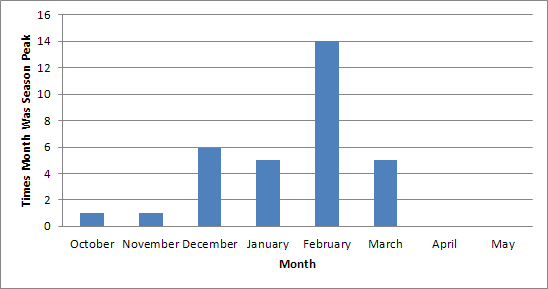*This week’s post is brought to you by [David Spring]( https://www.linkedin.com/in/davidspringoptis), Optis’ Business Analyst.*

On Monday, January 12, 2015, a male patient, with a fever, was transported to [Denver Health](http://www.denverhealth.org/) from the city of Arvada, CO. Why? This man had recently been in an Ebola-infected country and required testing to confirm the absence of Ebola. According to Dr. Connie Price, Chief of Infectious Diseases at Denver Health, "Medical experts have to be astute in order to identify such an individual, but would likely have to just manage one patient at a time." Identifying individuals such as this man is important and requires scrutiny; working with employees who may get sick during the winter months is an entirely different effort and unless handled properly can lead to negative workplace results.
What are the chances an employee will come to work sick? According to the [2014 Fifth Annual Flu Survey]( http://investor.staples.com/phoenix.zhtml?c=96244&p=irol-newsArticle&ID=1977806) from Staples, 60 percent of employees will come to work sick. This number has fluctuated significantly during the years of the report but is a positive drop from the 90 percent of employees in 2013. But still, employers must take notice, if they haven’t already, regarding ill employees coming to work. Despite wellbeing efforts to minimize contagion in the office, illness and disease can be transmitted easily. This time of year in particular demands proactive efforts by employers, since we are in the midst of the influenza season and right around the corner from peak flu activity. According to the [CDC](http://www.cdc.gov/flu/about/season/flu-season.htm) February is the peak month of flu activity. Does your team have the processes in place to manage a spike in employee leave? As the following chart displays, February has been the peak month for flu in the United States for 14 seasons as measured over the thirty-two years from the 1982-83 to 2013-2014 flu seasons.

In addition, employers must be prepared for the potential of virus outbreaks, such as has occurred with Ebola in Africa. As the situation from Denver indicates, employers need to be ready to triage, one employee at a time, employees who potentially have Ebola or some other similar virus. Not convinced? The following section from [OSHA](https://www.osha.gov/pls/oshaweb/owadisp.show_document?p_id=3359&p_table=oshact) should serve as a cautious reminder to take seriously and be prepared for potential situations even if they don’t elevate to the level of an epidemic in your work location but do elsewhere.

Viruses such as Ebola would be considered a recognized hazard. For employers to successfully maintain a place of employment ‘free from recognized hazards’ means providing a place of employment that does not have an employee with a virus such as Ebola. Yes, it is a potential OSHA violation if you have an unmonitored, Ebola-sickened employee at your place of employment, working unfettered and roaming freely throughout the workplace.
Even though the likelihood is small that an Ebola-infected employee walks into your work location, you are required to provide a hazard-free environment. Even though peak flu season is right around the corner, you’re not likely to prevent the 60% of employees who are ill, with flu or something else, from coming to work sick. But, what can you do? If you think you’ve done all you can to encourage and provide a healthy workplace, it’s time to take an imaginative step and provide an alternative work environment, not just when employees are sick, that will increase the chances of promoting a healthier workforce and workplace.
It’s time to be creative and offer your employees the chance to work remotely. You might be thinking, "No way! Besides, didn’t Marissa Mayer’s actions at Yahoo suggest that working virtually isn’t productive?" The actions at Yahoo were individual and corrective and shouldn’t necessarily be considered a disruption to the trend of establishing alternative environments for work. A remote/virtual environment would be beneficial on several accounts. First, it’s likely the number of employees coming to work sick would be reduced, knowing they can work from home. The motivations for coming to the traditional workplace sick (loss of PTO, falling behind, etc.) would be diminished while the chances for a healthier workplace would be increased.
Furthermore, providing a remote/virtual workplace will have additional positive impacts; unscheduled absences, another negative workplace result, will shrink. According to the [American Management Association]( http://www.amanet.org/), organizations that implemented a remote work program realized a 63 percent reduction in unscheduled absences. If a healthier, more productive workplace is the result, aren’t virtual workplaces worth a consideration? Interestingly, according to [SHRM](http://www.shrm.org/pages/default.aspx), 66 percent of multinational organizations utilize virtual teams compared to only 28 percent of U.S.-based organizations.
Not all companies will have the right mold to offer a virtual work environment. Different employers are in different industries, have different characteristics and work structures and are more suited to offer a remote work environment. But, if you are looking for an imaginative alternative to ‘hosting’ sick workers and want to increase your chances of not having a hazardous workplace, consider offering a virtual workplace. It’s quite likely you’ll have a healthier, more productive workforce.
Revitalizing Leave Management During Flu Season


